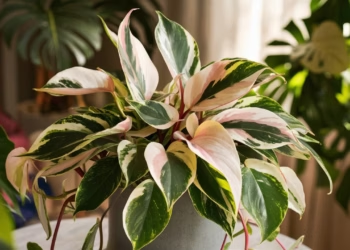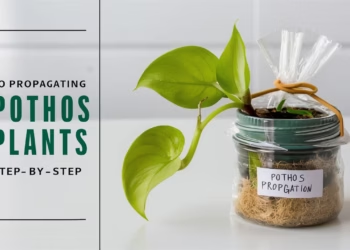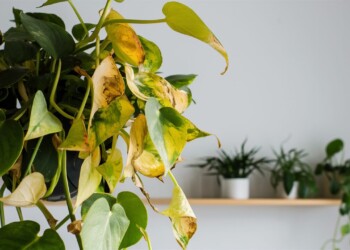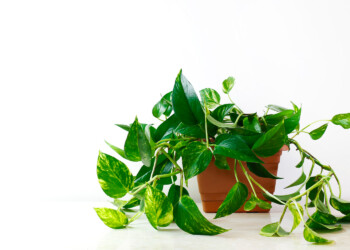Welcome to the world of Anthuriums, where vibrant blooms and lush foliage transform your space into a tropical oasis! Whether you’re a seasoned plant parent or just starting your green journey, mastering Anthurium plant care can be both rewarding and fun. In this guide, we’ll walk you through everything you need to know to keep your Anthuriums thriving. From light and water to soil and common problems, we’ve got you covered. So, let’s dive in and explore the beautiful world of Anthurium plant care!
Understanding Anthuriums
What Are Anthuriums?
Anthuriums, often known as flamingo flowers or laceleaf, are a genus of about 1,000 species of flowering plants. They are native to the Americas, where they thrive in tropical rainforests. With their glossy, heart-shaped leaves and striking, long-lasting flowers, Anthuriums are a popular choice for indoor gardening enthusiasts.
Why Choose Anthuriums?
Why should you opt for Anthuriums? Well, for starters, they bring a touch of elegance and a splash of color to any space. Their flowers, which come in shades of red, pink, white, and even green, can last up to eight weeks. Plus, Anthuriums are relatively low-maintenance compared to other tropical plants.
Light Requirements
Finding the Perfect Spot
Anthuriums love bright, indirect light. Direct sunlight can scorch their delicate leaves, while too little light can stunt their growth and reduce flowering. Place your Anthurium near a north or east-facing window where it can get plenty of filtered light.
Signs of Improper Lighting
How do you know if your Anthurium isn’t getting the right amount of light? Look out for these signs:
- Too Much Light: Yellowing leaves, brown leaf edges, or scorched spots.
- Too Little Light: Leggy growth, fewer or no flowers, and dark green leaves.
Watering Your Anthurium
How often should I water an anthurium?
Anthuriums thrive in consistently moist soil but hate sitting in waterlogged conditions. Water your Anthurium when the top inch of soil feels dry to the touch. This usually means watering once a week, but it can vary depending on your home’s humidity and temperature.
Tips for Proper Watering
- Use Lukewarm Water: Cold water can shock the roots, so always use room-temperature water.
- Drainage is Key: Ensure your pot has drainage holes to prevent root rot.
- Humidity Matters: Anthuriums love humidity. Mist your plant regularly or place it on a pebble tray filled with water.
Soil and Repotting
Choosing the Right Soil
Anthuriums prefer a well-draining, slightly acidic potting mix. A blend of orchid bark, peat moss, and perlite works wonders. Avoid using heavy garden soil as it can compact and suffocate the roots.
When to Repot
Repotting is essential for keeping your Anthurium healthy and happy. Aim to repot every 2-3 years or when you notice the plant becoming root-bound. Spring or early summer is the best time to repot.
Repotting Steps
- Gently Remove the Plant: Carefully lift the Anthurium from its current pot.
- Loosen the Roots: Tease apart any tangled roots and trim any that are dead or damaged.
- Prepare the New Pot: Fill the bottom with fresh potting mix.
- Place the Plant: Position the Anthurium in the center and fill around it with more mix.
- Water Thoroughly: Give the plant a good soak and let it drain.

Fertilizing Your Anthurium
The Right Fertilizer
Anthuriums benefit from a balanced, water-soluble fertilizer. Look for one with an N-P-K ratio of 10-10-10 or 20-20-20. Fertilize every 6-8 weeks during the growing season (spring and summer).
Application Tips
- Dilute Properly: Always dilute the fertilizer to half the recommended strength to avoid burning the roots.
- Even Distribution: Ensure the fertilizer is evenly distributed around the base of the plant.
- Watch for Signs: Too much fertilizer can cause leaf burn and reduced flowering. If you notice these signs, reduce the frequency or strength of feedings.
Common Problems and Solutions
Yellow Leaves
Yellow leaves are a common issue with Anthuriums. They can be caused by overwatering, underwatering, or too much direct sunlight. Check your watering routine and light conditions to identify the cause.
Brown Tips
Brown tips usually indicate low humidity or too much fertilizer. Increase humidity around your plant and adjust your fertilizing routine as needed.
Pests
Anthuriums can occasionally attract pests like aphids, spider mites, and mealybugs. Regularly inspect your plant and treat any infestations with insecticidal soap or neem oil.

Propagation
How to Propagate Anthuriums
Propagation is a great way to expand your Anthurium collection or share with friends. The easiest method is through division.
Steps for Division
- Remove the Plant: Take the Anthurium out of its pot.
- Separate the Roots: Gently pull apart the root ball into smaller sections, each with its own roots and leaves.
- Plant the Divisions: Pot each section into its own container with fresh potting mix.
- Care for New Plants: Water well and keep in a warm, humid environment until established.
Ideal Temperature for Anthurium
Temperature Range
Anthuriums prefer average to warm temperatures between 65-80°F (18-27°C). Temperatures below 60°F (15°C) can be harmful to the plant.
Temperature Control
Avoid placing your Anthurium near heating or air conditioning vents, fans, or drafty windows. Sudden temperature changes and cold drafts can stress the plant.
Maintaining Humidity for Anthurium
Humidity Preferences
Anthuriums thrive in humid environments. They prefer a humidity level of around 60-80%. If the air in your home is dry, especially during winter, consider misting the plant frequently or using a pebble tray or humidifier.
Methods to Increase Humidity
- Misting: Regularly mist the leaves with water.
- Pebble Tray: Place the pot on a tray filled with pebbles and water. Ensure the pot is not sitting directly in the water.
- Humidifier: Use a humidifier to maintain consistent humidity levels.
Additional Care Tips for Anthurium
Pruning and Maintenance
Regularly prune spent flowers and yellowing leaves to encourage new growth and maintain the plant’s appearance. Dust the leaves monthly or rinse them with lukewarm water to ensure they can photosynthesize efficiently.
Encouraging Blooms
If your Anthurium is not blooming during the growing season, it may need more light. Ensure it receives ample indirect sunlight and consider supplementing with artificial grow lights if necessary.
Winter Rest Period
Give your Anthurium a rest during the winter months. Lowering the temperature, reducing light exposure, and allowing the soil to dry out more between waterings can help stimulate flower production in the warmer months.
Anthurium Varieties
Popular Varieties
There are many stunning Anthurium varieties to choose from, each with its unique charm. Here are a few favorites:
- Anthurium andraeanum: Known for its vibrant red flowers.
- Anthurium scherzerianum: Features curly, orange-red spathes.
- Anthurium crystallinum: Famous for its large, velvety leaves with striking white veins.

Caring for Anthuriums doesn’t have to be daunting. With the right light, water, soil, and a bit of love, your Anthurium will thrive and bring joy to your space for years to come. Remember, each plant is unique, so pay attention to its specific needs and adjust your care routine as necessary. Happy gardening!
FAQs
How do I get my Anthurium to flower?
Ensure your plant gets bright, indirect light, consistent moisture, and regular feeding during the growing season. A happy, healthy Anthurium will reward you with beautiful blooms.
Can I grow Anthuriums outdoors?
Anthuriums can be grown outdoors in tropical and subtropical climates. They need a shaded spot with high humidity and protection from direct sunlight.
How do you keep an anthurium blooming?
To keep an anthurium blooming, follow these steps:
- Choose the right location: Place the plant in a bright spot with indirect sunlight. Avoid direct sunlight as it can scorch the leaves.
- Maintain proper temperature: Anthuriums thrive in temperatures between 16-22°C (60-72°F). Avoid placing them in areas with cold drafts or near heating vents.
- Ensure high humidity: These plants prefer high humidity. You can increase humidity by misting the plant regularly or placing a humidifier nearby.
- Water properly: Water the plant when the top inch of soil feels dry. Make sure to use lukewarm water and avoid letting the plant sit in standing water.
- Feed regularly: Use a balanced, water-soluble fertilizer once a month during the growing season (spring and summer) to encourage blooming.
- Prune as needed: Remove dead or faded flowers to encourage new growth and maintain the plant’s appearance.
Why are my Anthurium’s leaves turning yellow?
The best place to put an anthurium is:
- Bright, indirect light: Near a window with filtered sunlight or in a well-lit room away from direct sun exposure.
- Warm room: A room with consistent temperatures between 16-22°C (60-72°F) is ideal. Avoid placing it near cold drafts or heating vents.
- High humidity area: Bathrooms or kitchens can be great spots due to higher humidity levels. You can also use a humidifier to maintain humidity around the plant.
- Away from draughts: Ensure the plant is not exposed to draughts or sudden temperature changes, which can stress the plant and hinder blooming.
Why are my Anthurium’s leaves turning yellow?
Yellow leaves can result from overwatering, underwatering, or too much direct sunlight. Adjust your care routine accordingly.
How often should I mist my Anthurium?
Mist your Anthurium a few times a week, especially in dry indoor environments. Alternatively, you can use a humidifier to maintain the ideal humidity levels.










